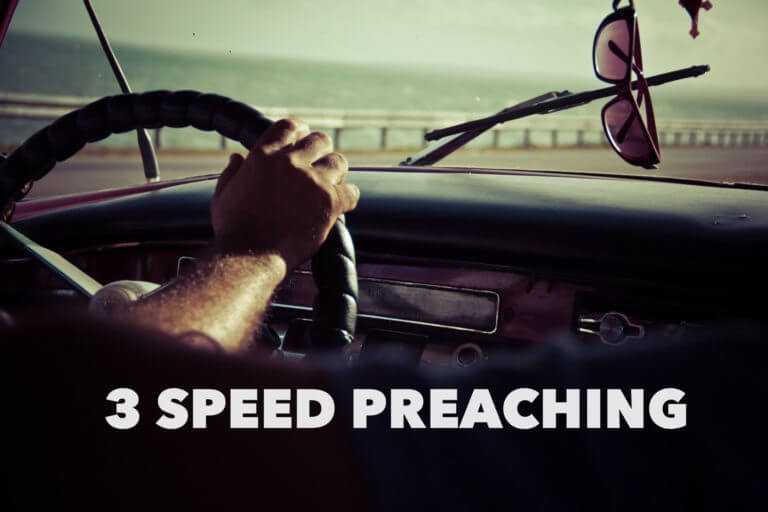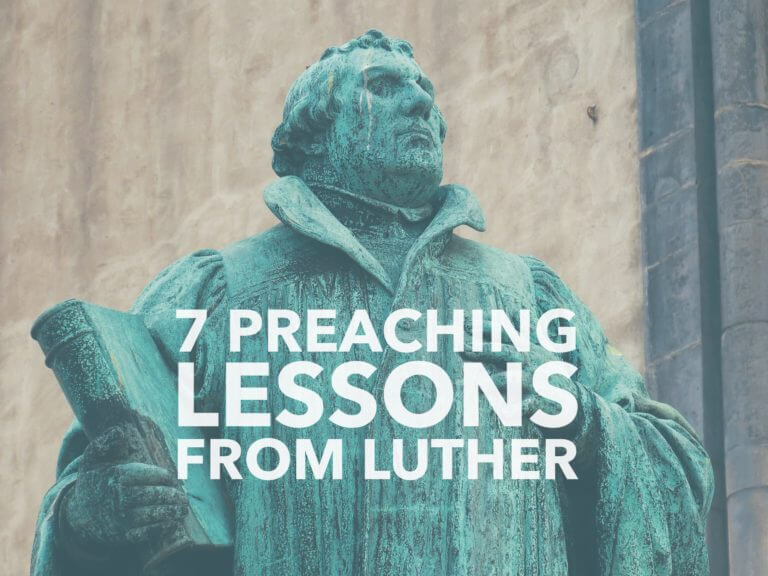How to Write A Sermon – 7 Steps to A Memorable Message (Step 7)
Writing a sermon is like building a house. There are 7 steps the construction of sermon goes through.
We have already covered the first six steps:
- Step 1: Pray – Connect to the power source.
- Step 2: Scripture – Lay the foundation.
- Step 3: Big Idea – Build the frame.
- Step 4: Illustrations – Pick the carpet.
- Step 5: Construct the outline – Finish the build.
- Step 6: Edit ruthlessly – Final Inspection
Now on to the final step.
Step 7: Move In
The seventh step in writing a sermon is to move in – practice.

When you build a house, the process doesn’t end the day they hand you the keys. After you move in there is still the warranty period.
Even after all the inspections and thorough effort by the construction crew, after you move into the house something will inevitably go wrong.
For my wife and my first house, it was a few things. A few windows were not properly sealed, so after the first rain storm condensation built up in the windows. Also, as the foundation settled, some of the countertops in the house began to separate from the wall.
Fortunately, we had the warranty! We just called the warranty department before it was too late and they came out and fixed it all immediately free of charge.
What does this have to do with your sermon?
Running through your sermon is like the new home warranty. After you have gone through the previous 6 steps, you probably feel like your sermon is finished like a new home. But when you live in it a while and practice it a few times, you will see the cracks.
Practicing is like a warranty, it lets you fix problems without any penalty before it’s too late.
This is something that many pastors are tempted to skip because it takes a lot of work and can seem repetitive. Don’t get lazy! I truly believe that the habit of practicing your sermon is one of the biggest difference makers between being an average preacher or a great one.
Why You Need to Practice Your Sermon:
- A sermon is much different on paper than spoken. Not everything will translate off the page to your lips.
- You will catch things you missed in the editing process.
- You will learn how to deliver different parts of the message better. You can work out the best tone, volume, pace, gestures, pauses, eye contact, facial expressions, and maybe even sound effects.
- The Holy Spirit will inspire changes. Things will pop into your head that work even better than what you have written – a perfect illustration, a conversation you had, a joke, or a way of seeing the scripture that you have never seen before.
- The better you know your message the more confident you will be while preaching. There is nothing more terrifying than standing on stage with everyone watching you and not knowing what to say next.
- You will get better at preaching in general. You are not just working to get better at one sermon. Every time you practice you are becoming a better preacher for every future sermon too!
Practice won’t make perfect. There is no such thing as a perfect sermon. But practice will definitely make better.
Different Ways to Practice a Sermon:
- Read your message out loud.
- Practice with notes.
- Practice without notes to see how much you remember.
- Practice on the stage you will preach on.
- Practice in front of the mirror to watch your body language, gestures, and eye contact.
- Practice in front of a few people to get feedback.
- Practice with a coach/mentor to critique you and offer advice.
- Practice in front of a camera so you can watch yourself and make corrections.
How I Practice My Sermons:
After my manuscript is compete basic rehearsal process that I like to implement.
Like my editing process in step 6, I like to print the manuscript of the message off as I work to internalize it. Then I get alone in a room away from everyone so I can practice, fail, and feel ridiculous without anyone noticing.
I like to time each run through with the built-in timer app on my iPhone so I know roughly how long the message will be and if I need to shorten it.
First, I read the entire message word for word out loud. As I’m reading, I have a pen ready to note any changes that I think I need to make.
Second, I read the entire message out loud again while trying to look less down at the paper and more up at my imaginary audience.
Third, once I am feeling a little more confident, I put the manuscript down and practice preaching the message as best I can without looking at all (except for scripture reading). I usually stumble or forget my place and have to stop and look at the message a lot, but I am always impressed by how much I already know at this point.
I preach a lot of bad sermons to an audience of nobody so when I am in front of somebody I am ready to go.
When I am feeling good about my message, I take a break for a while, and put together my outline that I will preach from. I rehearse and process my message with a manuscript, but when it comes time to preach I use a very basic one page outline on my iPad.
Sticking to only one page forces me to cut everything except for the scripture I will read, a few key points and cues for illustrations.
Finally, on Saturday night, I read my manuscript a few times and then lock myself in my closet to practice my entire message a few times just using my outline.
I never feel fully prepared, but at some point I just have to call it a night so I can get some sleep before church in the morning.
The morning of my sermon, I don’t have time to practice alone, so I continually run through my sermon in my head and pray over it while getting ready, driving to church, and getting set.
That is what it looks like for me. Take what you can, but find a routine that works best for you. Every pastor prepares a little different.
WARNING: As beneficial as practice is, it is possible to practice too much. At some point there is a diminishing return on your practice. Do not practice so much that you become a robot. Find what works best for you to internalize the message and be confident, while still allowing for a natural delivery.
Remember This
You will never preach a perfect sermon, but you do have a perfect God who will use your imperfect message to accomplish His perfect mission.
Do your absolute best and God will handle the rest.
[If you haven’t noticed, these steps are similar to my 7 Step Sermon Prep Checklist that you can get FREE here]
This article is part of the Preaching 101 series. More from this series:
- Preaching 101 – Back to Basics
- What Does The Bible Say About Preaching?
- Before You Practice Preaching, Practice What You Preach
- How to Write a Sermon – 7 Steps to a Memorable Message (Step 1)
- How to Write a Sermon – 7 Steps to a Memorable Message (Step 2)
- How to Write a Sermon – 7 Steps to a Memorable Message (Step 3)
- How to Write a Sermon – 7 Steps to a Memorable Message (Step 4)
- How to Write a Sermon – 7 Steps to a Memorable Message (Step 5)
- How to Write a Sermon – 7 Steps to a Memorable Message (Step 6)




Great than you ,God bless you